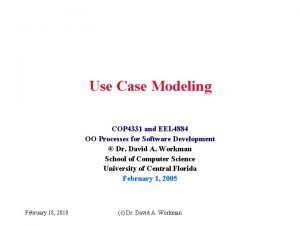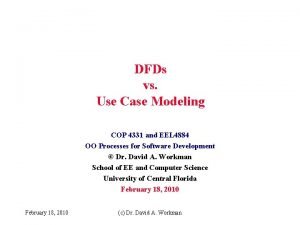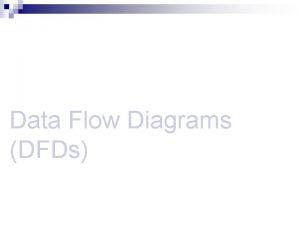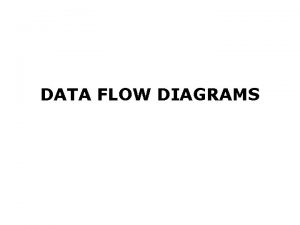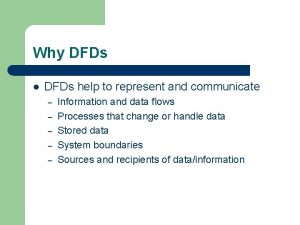DFDs vs Use Case Modeling COP 4331 and



- Slides: 3

DFDs vs. Use Case Modeling COP 4331 and EEL 4884 OO Processes for Software Development © Dr. David A. Workman School of EE and Computer Science University of Central Florida February 18, 2010 (c) Dr. David A. Workman

Similarities Data Flow Diagram Feature Use Case Model Feature Process Bubble: Major system processing function at Level 1 (possibly Level 2). Use Case: System function as perceived by one or more system actors. External Sources and Sinks: Entities outside the system that provide system input flows and/or receive system output flows. Actors: External entities that directly interact with system use cases by providing input data and receiving system responses. Context Diagram: Highest level DFD depicting the entire system as a single process bubble connected only to external data sources and sinks. System Box: defines the boundary of the proposed system – separates internal functional capabilities from external entities (actors) that use those capabilities. February 18, 2010 (c) Dr. David A. Workman 2

Differences Data Flow Diagram Feature Use Case Model Feature Stores: Internal data storages devices/areas when persistent data resides until it is needed by a process. No corresponding feature. Data Flow Arrows: Channels connecting two processes, or a process and a store, or a process and an external source/sink. Flow direction is indicated by the arrow head. Data content of the flow appears as a label. Association relation: Between actor and use case such relations indicate a bi-directional flow of data, but no labels or data content are specified. Between two processes, association indicates the sharing of data, but does not specify data content nor flow direction. Include, Gen/Spec, Uses relation: Defined only between use cases. They describe control relationships and/or functional capabilities, but do not carry data, nor are they labeled. February 18, 2010 (c) Dr. David A. Workman 3
